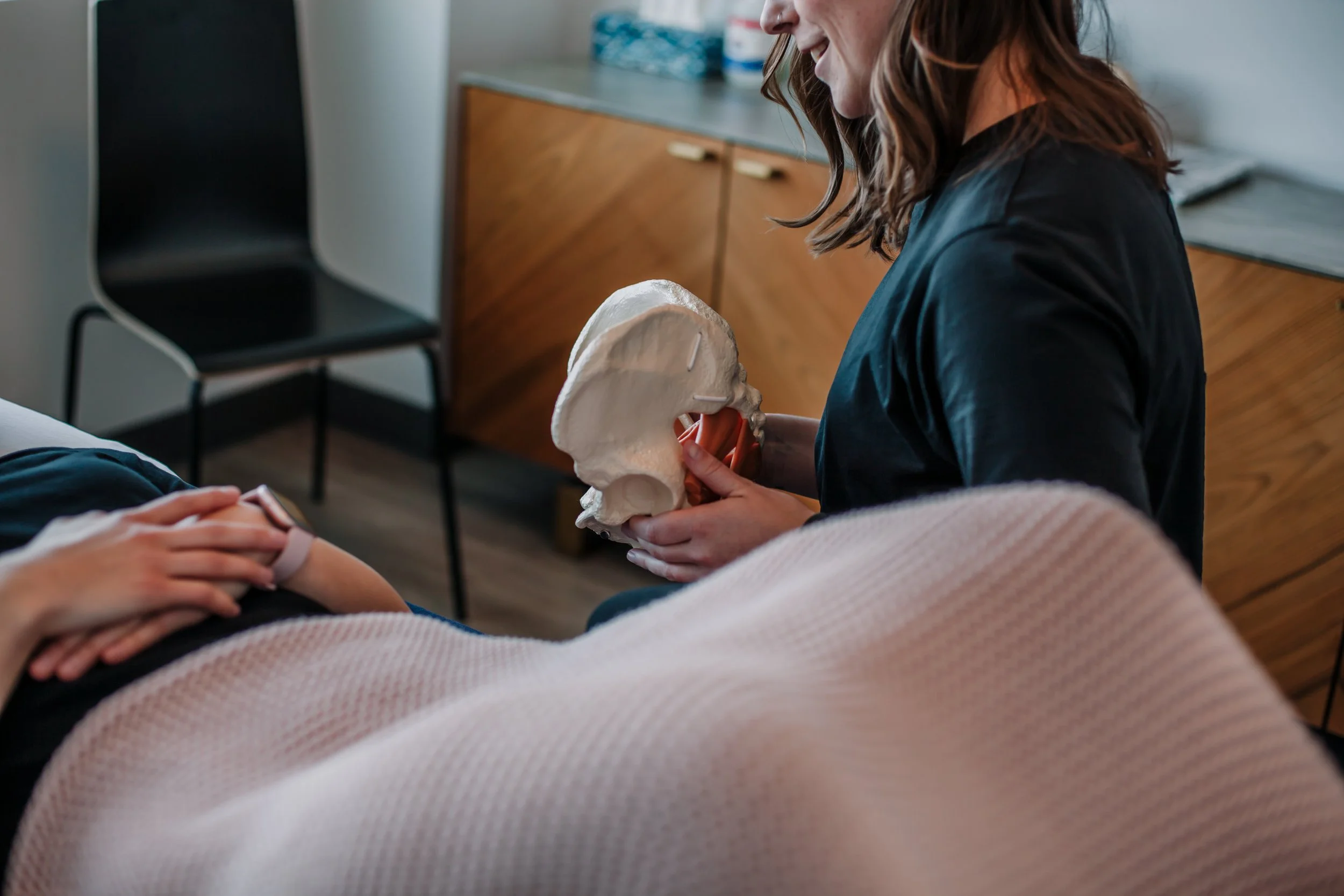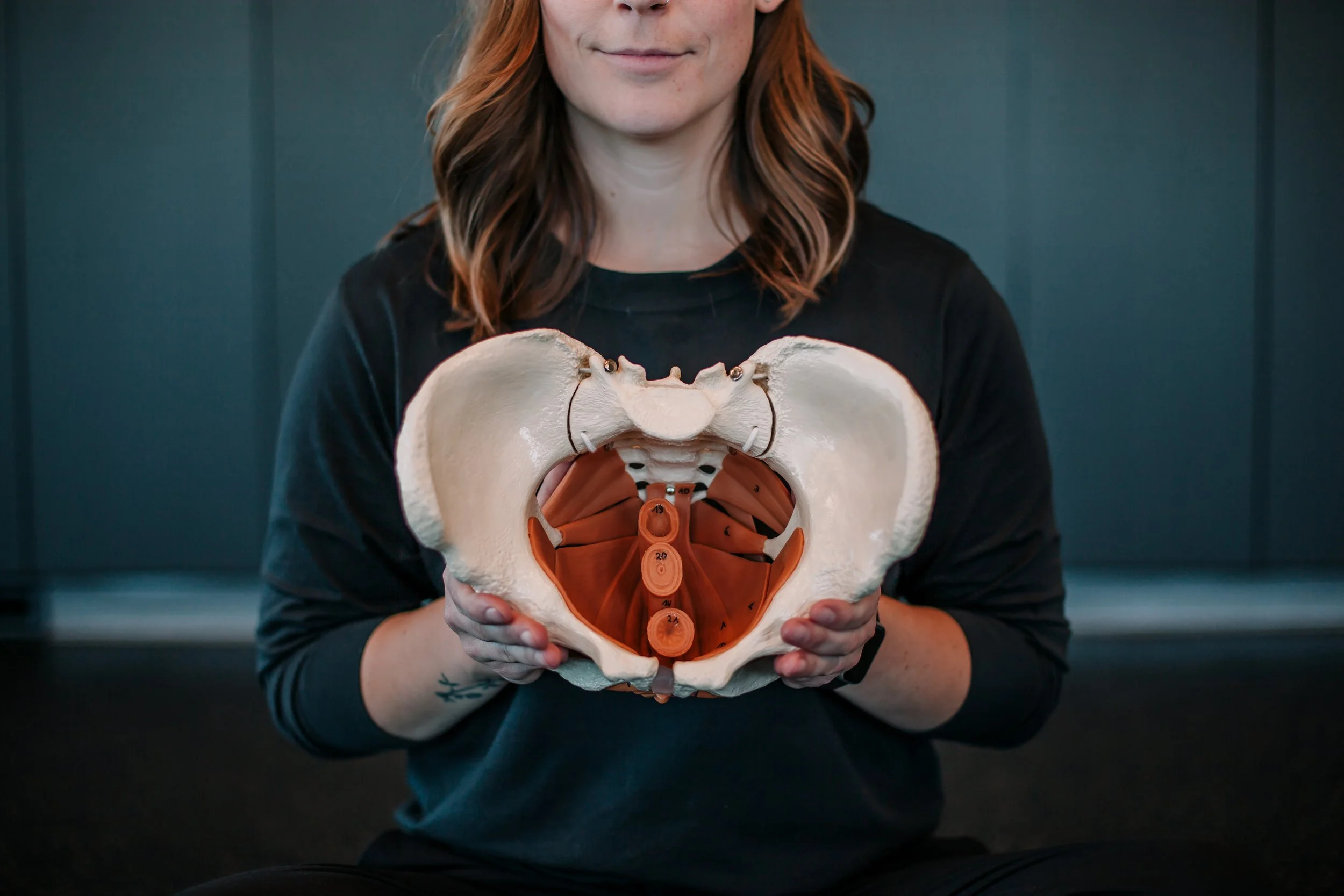
Understanding Stress Urinary Incontinence and Effective Treatments
Stress urinary incontinence (SUI) is a common condition characterized by the unintentional leakage of urine during physical activities that put pressure on the bladder, such as coughing, sneezing, laughing, or exercising. While SUI can significantly impact a person's quality of life, there are effective treatments available to manage and alleviate symptoms. In this blog post, we'll explore what stress urinary incontinence is and discuss some of the treatment options.
Stress urinary incontinence (SUI) is a common condition characterized by the unintentional leakage of urine during physical activities that put pressure on the bladder, such as coughing, sneezing, laughing, or exercising. While SUI can significantly impact a person's quality of life, there are effective treatments available to manage and alleviate symptoms. In this blog post, we'll explore what stress urinary incontinence is and discuss some of the treatment options.
Understanding Stress Urinary Incontinence:
Stress urinary incontinence occurs when the muscles and tissues that support the bladder and urethra become weakened, leading to leakage of urine during activities that increase abdominal pressure. Common causes of SUI include childbirth, menopause, pelvic surgery, obesity, and aging. Symptoms of SUI may vary in severity, ranging from occasional leaks to more frequent and significant episodes of urine leakage.
Treatment Options for Stress Urinary Incontinence:
Pelvic Floor Exercises: Pelvic floor muscle exercise, are often recommended as a first-line treatment for SUI. These exercises involve contracting and relaxing the pelvic floor muscles to improve strength and control. A pelvic health physiotherapist can provide guidance on how to perform Kegels correctly and develop a personalized exercise program.
Lifestyle Modifications: Making lifestyle changes can help manage symptoms of SUI. This may include maintaining a healthy weight, avoiding foods and beverages that irritate the bladder (such as caffeine and alcohol), quitting smoking, and managing chronic coughing.
Bladder Training: Bladder training involves scheduling regular trips to the bathroom to empty the bladder, gradually increasing the time between voids. This can help retrain the bladder to hold urine for longer periods and reduce urgency and frequency.
Pelvic Floor Devices: Pelvic floor devices, such as vaginal cones or weights, can be used to help strengthen the pelvic floor muscles. These devices are inserted into the vagina and require the user to perform pelvic floor exercises to hold them in place.
Medical Intervention: In cases where conservative treatments are not effective, medical interventions may be considered. These may include medications to improve bladder function, injections of bulking agents to support the urethra, or surgical procedures to provide additional support to the bladder and urethra.
Conclusion:
Stress urinary incontinence can have a significant impact on daily life, but effective treatments are available to manage symptoms and improve quality of life. Whether it's through pelvic floor exercises, lifestyle modifications, or medical interventions, individuals with SUI have options for finding relief. If you're experiencing symptoms of SUI, don't hesitate to speak with a healthcare provider or pelvic health specialist to explore treatment options tailored to your needs. With the right approach, you can regain control and live confidently without the worry of urine leakage.
Understanding the Pelvic Floor: Roles and Anatomy
The pelvic floor is a vital yet often overlooked part of the body, playing crucial roles in various functions such as supporting pelvic organs, controlling bowel and bladder movements, and contributing to sexual function. Despite its importance, many people are unfamiliar with the anatomy and functions of the pelvic floor. Let's delve into the pelvic floor's anatomy and its role in pelvic health.
The pelvic floor is a vital yet often overlooked part of the body, playing crucial roles in various functions such as supporting pelvic organs, controlling bowel and bladder movements, and contributing to sexual function. Despite its importance, many people are unfamiliar with the anatomy and functions of the pelvic floor. In this blog post, we'll delve into the pelvic floor's anatomy and its roles in maintaining pelvic health.
Anatomy of the Pelvic Floor:
The pelvic floor is a group of muscles and connective tissues that form a supportive hammock-like structure at the base of the pelvis. It consists of layers, each with its own unique function:
Superficial Layer: Contributes to sexual function and anchors the deeper muscles, and external anal sphincter
Intermediate Layer: The intermediate layer consists of the urogenital diaphragm, which supports the urethra and vagina in females and the urethra in males.
Deep Layer: The deepest layer of the pelvic floor includes the levator ani muscles, which provide structural support to the pelvic organs and help maintain continence.
Roles of the Pelvic Floor:
Supporting Pelvic Organs: One of the primary functions of the pelvic floor is to support the pelvic organs, including the bladder, uterus (in females), and rectum. These organs rest on the pelvic floor muscles, which help prevent them from descending or prolapsing into the vaginal or rectal canal.
Controlling Bowel and Bladder Movements: The pelvic floor muscles play a crucial role in maintaining bowel and bladder continence. These muscles relax to allow for the passage of urine and stool and contract to prevent leakage or incontinence.
Stabilizing the Core: The pelvic floor is an integral part of the core musculature, working in conjunction with the deep abdominal muscles, back muscles, and diaphragm to provide stability and support to the spine and pelvis.
Contributing to Sexual Function: The pelvic floor muscles are involved in sexual function and pleasure for both men and women. In females, these muscles help support the uterus and vaginal canal, while in males, they play a role in erectile function and ejaculation.
In conclusion, understanding the anatomy and roles of the pelvic floor is essential for maintaining overall health and well-being. By acknowledging the significance of the pelvic floor in supporting pelvic organs, controlling bowel and bladder movements, stabilizing the core, and contributing to sexual function, individuals can appreciate the importance of pelvic floor health in their daily lives.
What is Pelvic Floor Therapy?
Have you ever dealt with the troubling issue of not being able to control your bladder? Have you ever thought about finding relief from pain during sex or using a tampon? Maybe you have been diagnosed with a condition where organs in your pelvis drop, causing a lot of symptoms, but you aren't a candidate for surgery. Don't worry, because there is hope. Pelvic floor therapy is a form of rehab that can help with these problems and more, offering a real treatment option for those who don't seem to have any other options. See how our team at Bloom Therapy can help.
Have you ever dealt with the troubling issue of not being able to control your bladder? Have you ever thought about finding relief from pain during sex or using a tampon? Maybe you have been diagnosed with a condition where organs in your pelvis drop, causing a lot of symptoms, but you aren't a candidate for surgery. Don't worry, because there is hope. Pelvic floor therapy is a form of rehab that can help with these problems and more, offering a real treatment option for those who don't seem to have any other options.
Still not clear? Let’s back it up a step.
Pelvic floor therapy is a branch of Physiotherapy that is offered by a physiotherapist who has completed the necessary education to assess, diagnosis and treat pelvic floor conditions and disorders. Not every physiotherapist is a pelvic therapist but every pelvic therapist is a certified physiotherapist.
The awareness around this area of practice has been steadily increasing as a greater number of women and men seek alternative care for their pelvic health concerns.
Pelvic therapy is a specialized form of therapy that focuses on addressing various pelvic concerns, such as incontinence, prolapse, and pain during sex. However, it is important to note that pelvic therapy can also be beneficial for individuals experiencing chronic back or hip pain that has not responded well to traditional physiotherapy methods. Pelvic physiotherapists are often knowledgeable about pregnancy-related conditions like rectus diastasis and pelvic girdle pain as well. The scope of pelvic floor therapy extends beyond these examples, so if you're unsure whether pelvic therapy is right for you, I recommend scheduling a discovery call with a pelvic therapist of your choice. This will help you determine if pelvic therapy is the appropriate fit for your specific needs.
So what can you expect in pelvic floor therapy treatment?
At Bloom Therapy, we understand the importance of clear communication and setting expectations with our clients. When it comes to the assessment and treatment of pelvic floor conditions, we prioritize a thorough understanding of the condition as a whole. Our skilled therapists have specialized knowledge surrounding pelvic floor conditions and utilize a systemic/whole body assessment approach to identify the underlying factors contributing to the issue. This approach allows us to determine the driving cause and develop a targeted treatment plan.
During the assessment process, an internal examination may be performed to determine if the pelvic floor muscles are involved in the problem. We want to assure our clients that this examination is not always required and can be opted out of at any time, based on their level of comfort. We value your autonomy and respect your boundaries.
Following the evaluation, our therapists will provide treatment and develop a home exercise program based on the findings and the individualized treatment plan. This comprehensive approach ensures that our clients receive the most effective and personalized care possible.
At Bloom Therapy, we prioritize transparency and empowering our clients to make informed decisions about their treatment. We believe in open communication and will always provide clear explanations, answer any questions, and address any concerns our clients may have. Together, we will work towards achieving the best possible outcomes and improving overall well-being.
Bottom line?
If you are struggling with pelvic floor concerns, pelvic therapy should be considered as a first line of treatment. Remember, just because it is common, does not mean it’s normal.
- Miranda Shumborski, MScPT
What to do after a Motor Vehicle Accident
Getting in a motor vehicle accident is scary and stressful. Often your adrenaline is running on high and the physical repercussions don’t set in until a few days later. We always suggest getting an assessment done after a car accident just in case you experienced any whiplash or any other injuries. Let us help you navigate the process of starting a claim and getting the treatment you need. You can see either our Physiotherapist or our Chiropractor to get you started on the path to recovery.
If you have been in a car accident you are entitled to accidents benefit coverage regardless of who was at fault. Let us help clarify the process by breaking it down for you.
1. File a report with the police
The first thing you are going to need to do is file an accident report with the police.
2. Contact your insurance company
You must file both an accident claim and an injury claim. You will need to tell them you are filing for both and they will assign a different adjuster for each.
3. COMPLETE AB-1 FORM
It is important for you to know that by completing the AB-1 Form you may be eligible to start a limited number of treatments with your primary health care provider prior to confirmation from your insurance company. This form MUST be filed within 10 days of the accident. Your Primary Health Care Provider at Bloom can submit both your AB-1 and AB-2 to your adjuster.
4. Book an assessment
When it comes to the assessment, you can see any Primary Health Care provider. This includes our Physiotherapist or Chiropractor, or your Medical Doctor. They will complete an AB-2 Form with you and submit this form directly to your insurance company. We recommend this appointment is booked within 10 days of your accident to get pre-approved for treatments under the “Diagnostic and Treatment Protocols”. Even if you are not feeling any symptoms we suggest booking an assessment. Symptoms like whiplash often have a delayed onset and you don’t want to miss your window for filing a claim.
5. ASSIGNMENT OF TREATMENTS
Once an assessment has been completed on your injuries, your medical professional will assign either 10 or 21 treatments. These treatments can be used towards physiotherapy, chiropractor, acupuncture or massage therapy. You have control over which modality or combination of modalities you would like to use, keeping in mind the advice of your medical professional. Note that if your first assessment is performed by a physical therapist or chiropractor, this may count as two treatments out of your 10 or 21. A diagnosis by a medical doctor will not use up any of your treatments. The decision is entirely up to you.
6. INSURANCE CONFIRMATION
If you choose to use Bloom Therapy as your team for your MVA treatments, we will have the ability to directly bill your insurance company. Before proceeding with your treatment we recommend that you receive confirmation from your insurance company that you will be covered and for how many treatments. Once you know how many treatments you are covered for (10 or 21), we recommend that you track how many treatments you have received. Any treatments outside of your protocol will not be covered by your insurance.
7. Provide clinic with necessary information
As soon as it becomes available to you, please provide the clinic with the following information:
Name of the insurance company
Name of your adjuster dealing with your injury claim and their contact information.
Claim number
The date of your accident
We understand that this seems like a lengthy process but taking the right steps from the beginning will lead to a smoother and ultimately more effective treatment plan!




